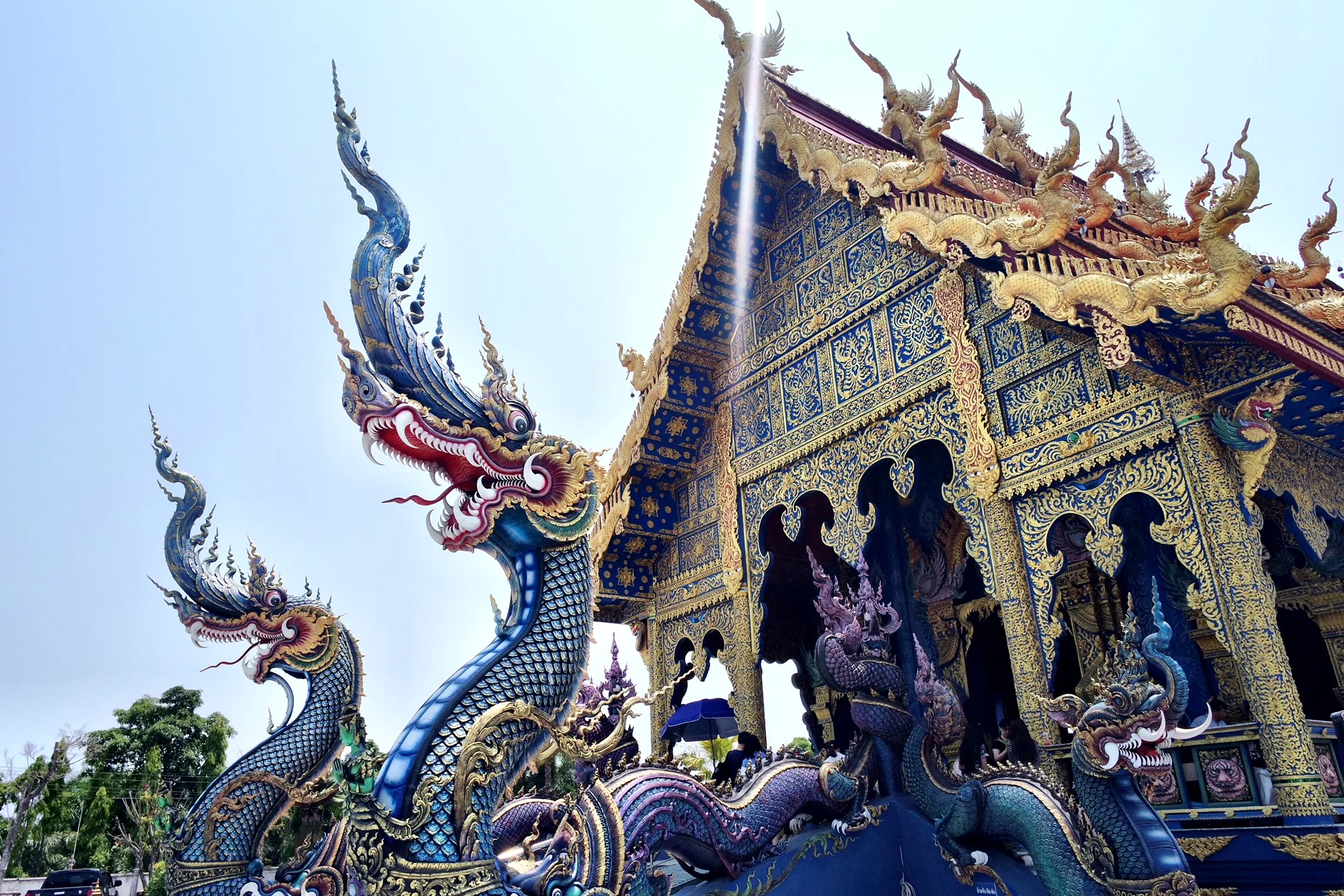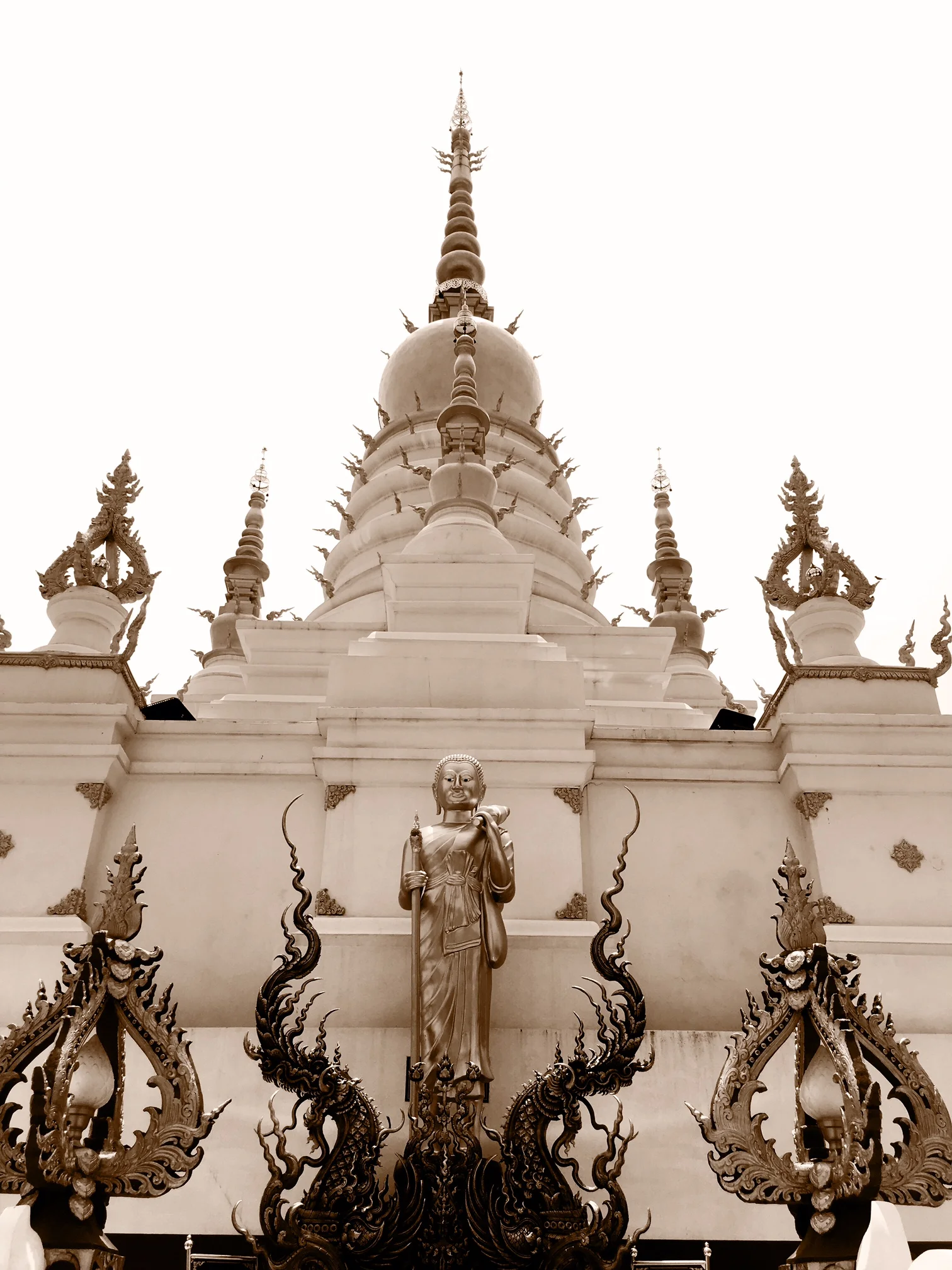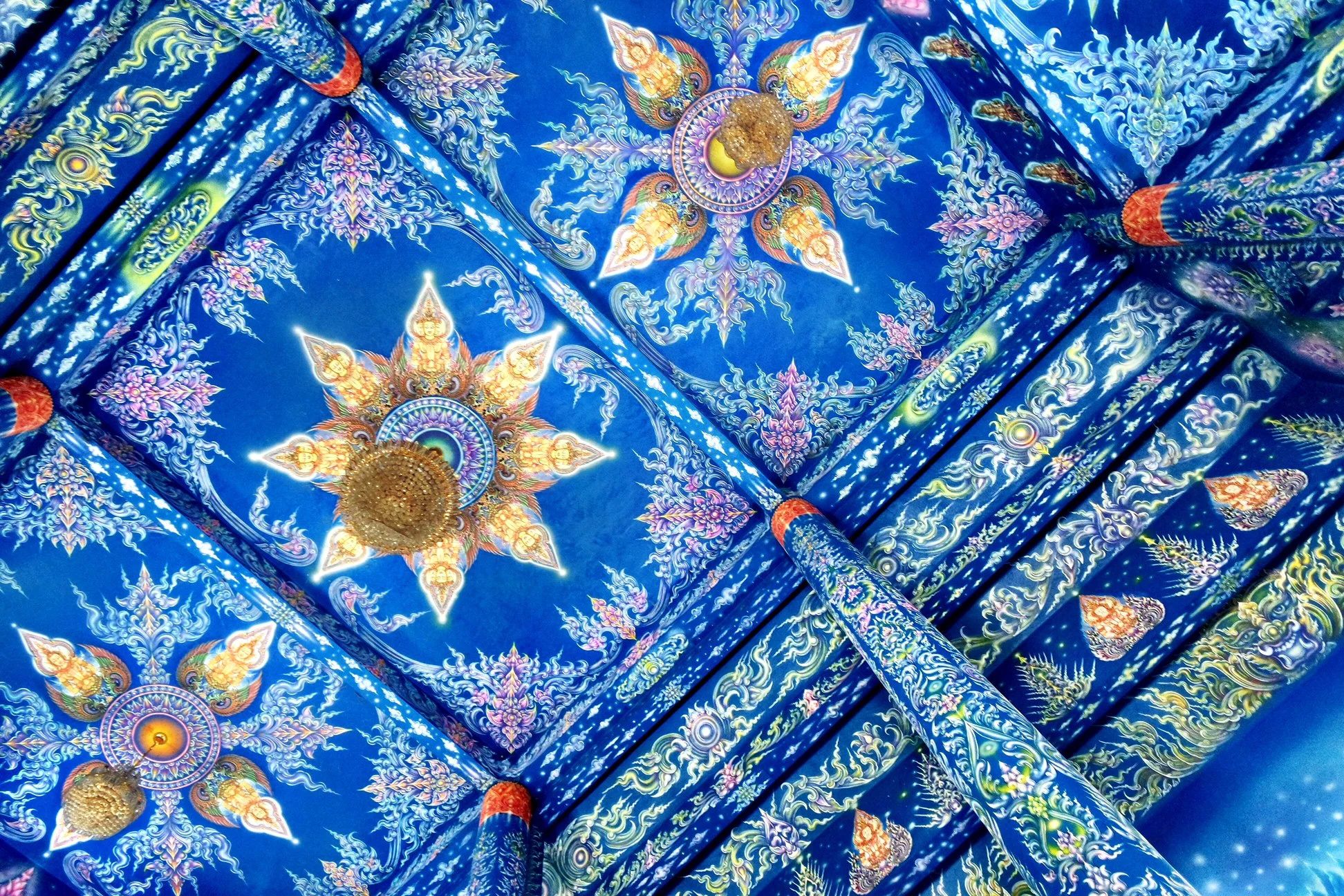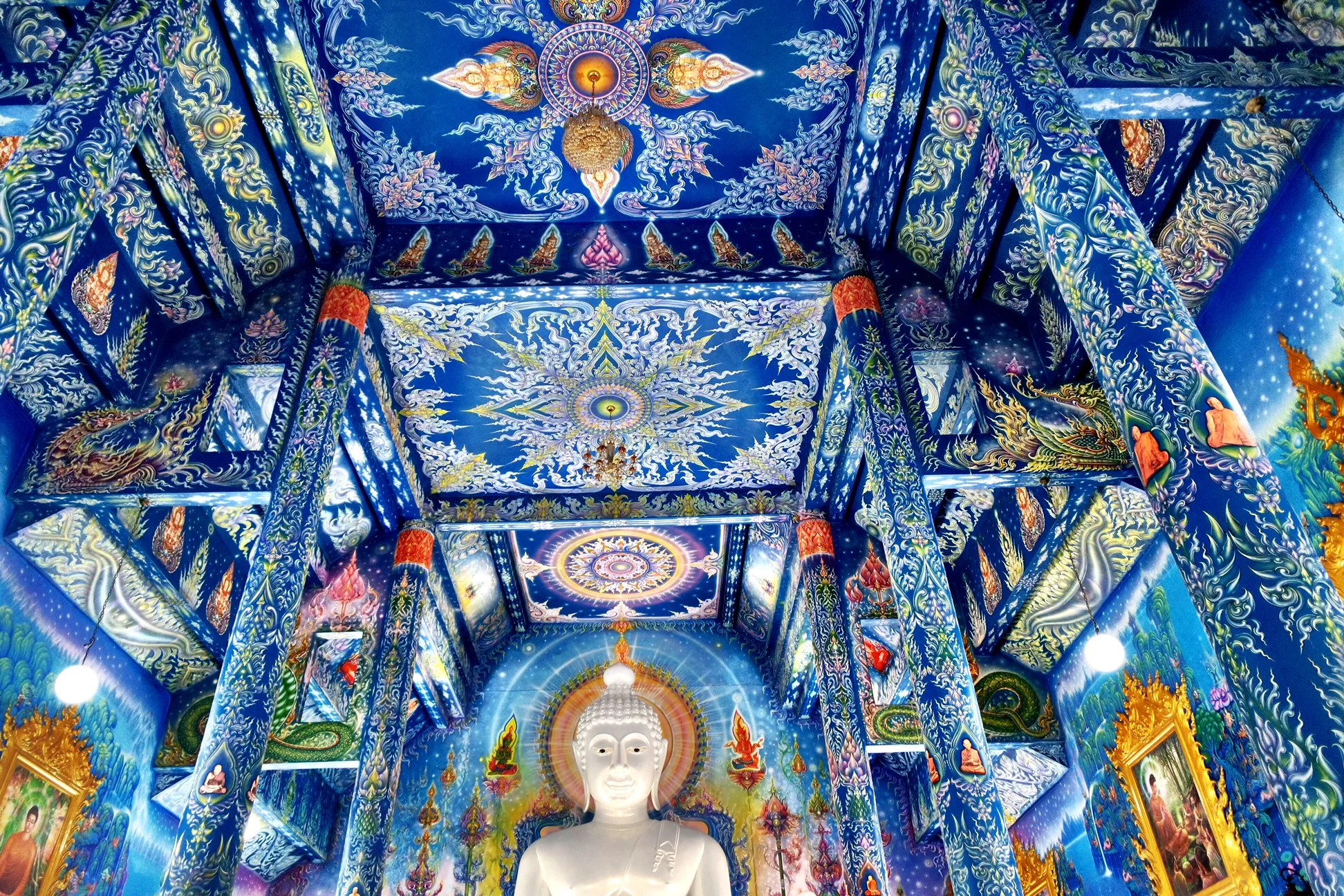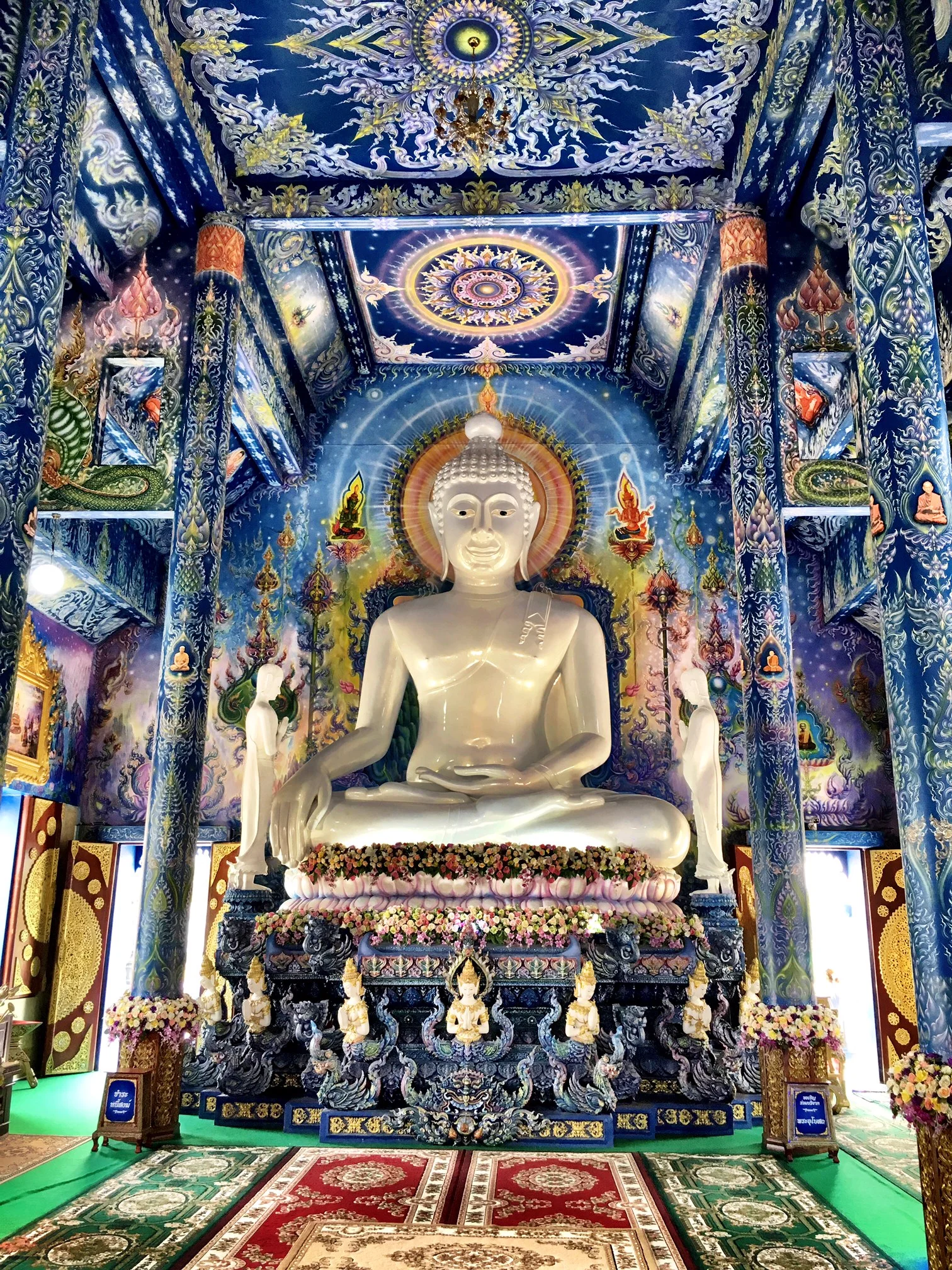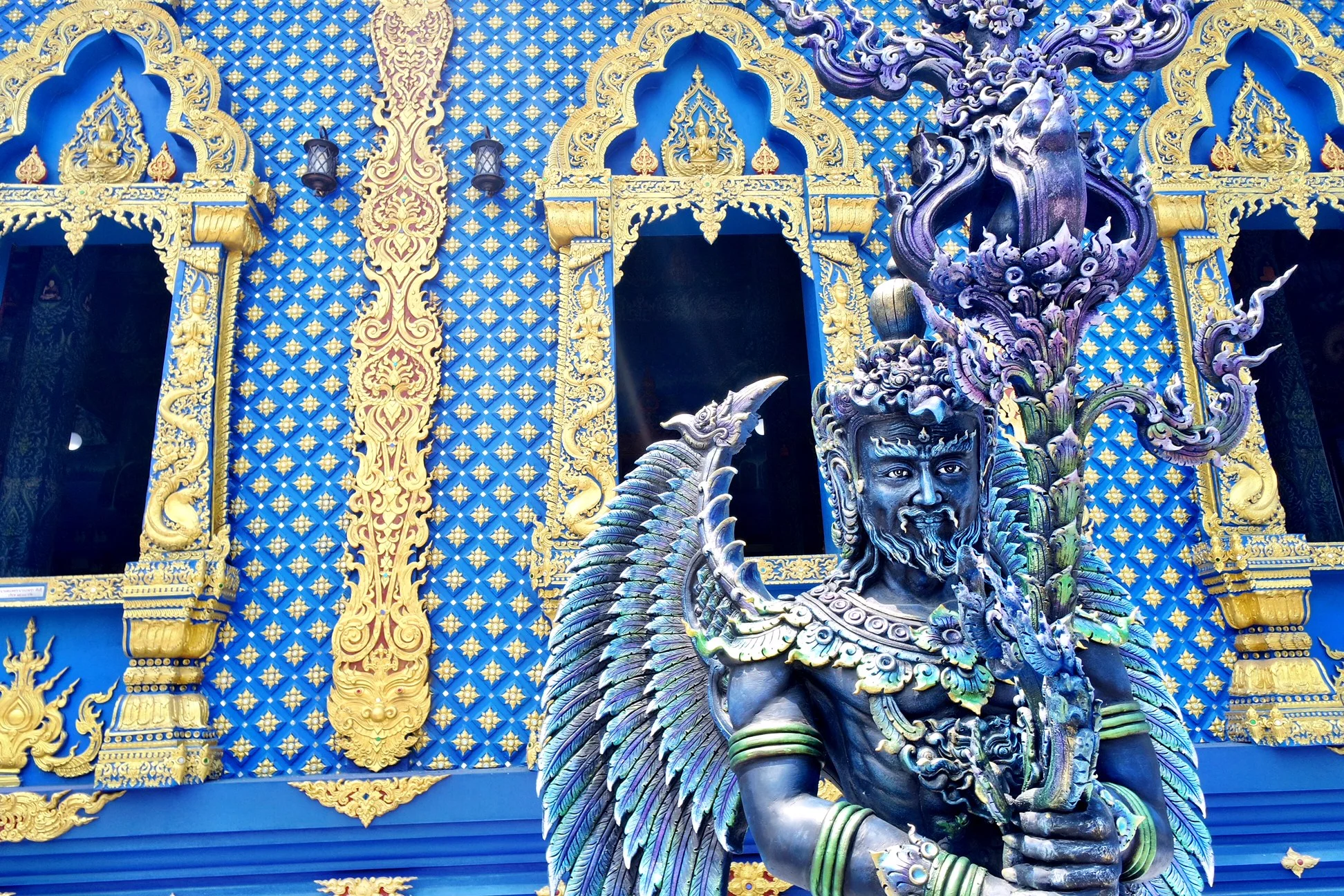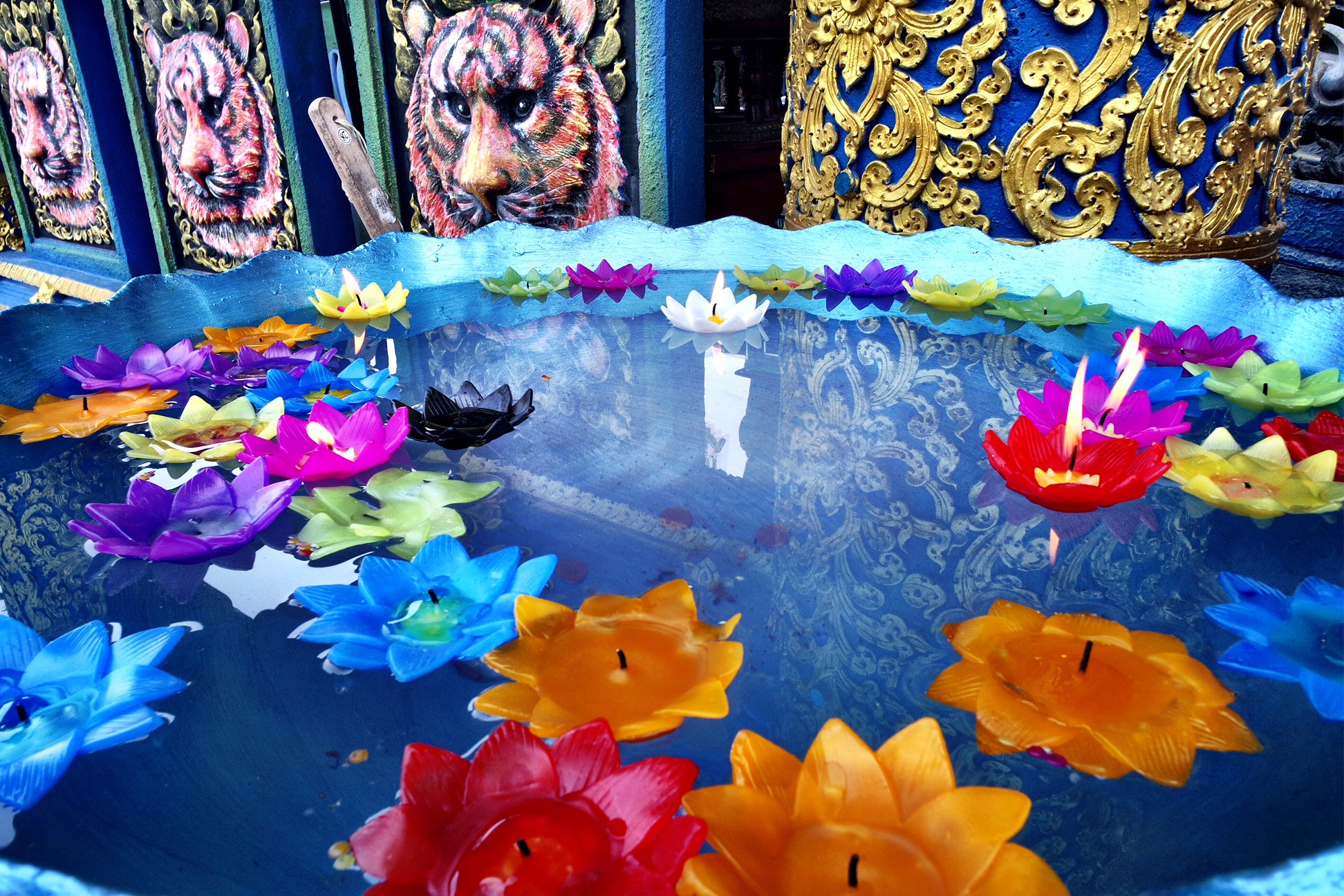No day trip to Chiang Rai is complete without a visit to this breathtaking wat, between the White Temple and Black Museum.
This newer temple can be paired with a day trip to the White Temple and Black House Museum, as well as the over-the-top Wat Sang Kaew
In October of 2005, a small village in Chiang Rai turned their attention to building a distinctive blue and gold temple inspired by tradition. Full of surprises and named for the tigers that once roamed there, Wat Rong Suea Ten is a six-acre property located in Rim Kok, a subdistrict of Chiang Rai. More commonly referred to as the Blue Temple, its monastery and pagoda were built upon the ruins of an ancient temple, abandoned 80 to 100 years prior.
“This lesser-known temple is still not widely promoted, so there are less tourists compared to the White Temple and Black House Museum. ”
Being a Slytherin, Wally has a special fondness for naga
Dancing Tigers?
This lesser-known temple is still not widely promoted, so there are less tourists compared to both Wat Rong Khun (White Temple) and the Baan Dam (Black House) Museum. The monastery was designed by Phuttha Kabkaew, a protégé of Chalermchai Kositpipat, and derives its name from the inhabitants of Rong Suea Ten village. The region was once a natural habitat that teemed with wildlife, including tigers who “danced” (leapt) over the nearby Mae Kok River. The name translates as House of the Dancing Tiger: rong is the Thai word for house, suea for tiger and ten for dancing. In what may prove either to be a disappointment to some or reassurance to others, there are no real, live tigers at Wat Rong Suea Ten.
The stupa at Wat Rong Suea Ten
It Takes a Village
In 1996, local villagers agreed to rebuild a temple here. The purpose was to establish a devotional center for meditation, prayer and worship, as they did not have a sacred space for merit-making (earning good karma points) in their town. Construction of the viharn monastery began in October 2005 and was completed in January 2016. Other parts of the temple are still under construction today.
The interior is reminiscent of the White Temple’s artwork — and indeed, we learned that it was created by a student of Kositpipat
In Living Color
A pair of fierce and wildly colorful naga flank the balustrade, acting as guards to the monastic hall’s entrance. Both the exterior and interior walls are covered in a vivid indigo hue embellished with gold.
The celestial themes and twilight blue create a mystical feel to the temple’s interior
Unlike at the White Temple, visitors are allowed to take photographs of the viharn’s interior. Inside, at the end of the great hall, a colossal white Buddha statue in the Bhumisparsha Mudra position sits framed by towering filigreed columns. His legs are crossed and his right hand points to the ground, the gesture of touching the earth, representing the moment Buddha attained enlightenment.
You can take pictures inside the Blue Temple — unlike in the White Temple
The influence of the artist Kositpipat can be seen through the trippy, kaleidoscopic imagery depicting the Lord Buddha’s spiritual journey that covers the walls and ceiling. There’s even a giant demon mouth that serves as the exit. Additional details include sculptures from Thai folklore and streaks of metallic gold, all contributing to the temple’s magnificence.
Turn back to look at the entrance, and you’ll see a representation of Hell, with the doors you came through actually a demon’s mouth
To symbolize dharma, the Buddha’s code of morals, the temple is predominantly painted blue, which is associated with wisdom, the infinite, purity and healing. Blue is also the least “material” of all hues and speaks to the limitless heights of ascension. The Virgin Mary and Christ are often shown wearing blue, as is the Hindu deity Vishnu and his blue-skinned incarnation, Krishna.
This angel-like being guards the Blue Temple
Entrance to the temple is free, and as at all Thai Buddhist temples, visitors must remove their shoes before entering, as well as ensure their shoulders and knees are covered.
Make a donation and light a floating lotus candle
You can make various donations to the temple. Wally went right over to the lotus-shaped candles, choosing a bright pink one, of course. He lit it and placed it in one of the bowls of water out front, making a wish as it bobbed along with its brethren. –Duke

